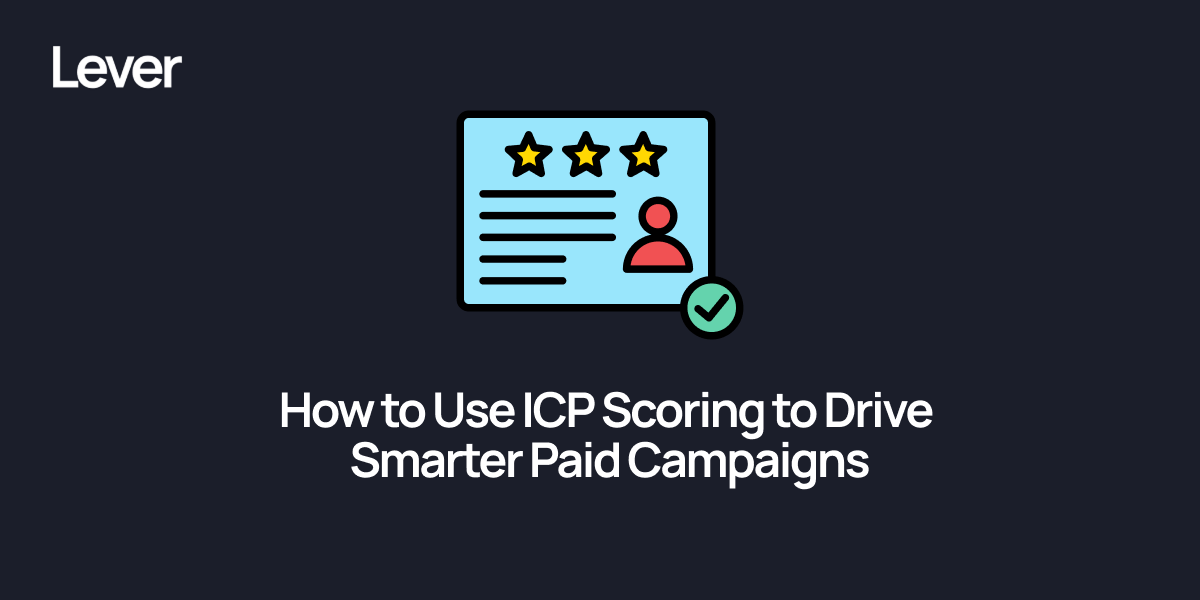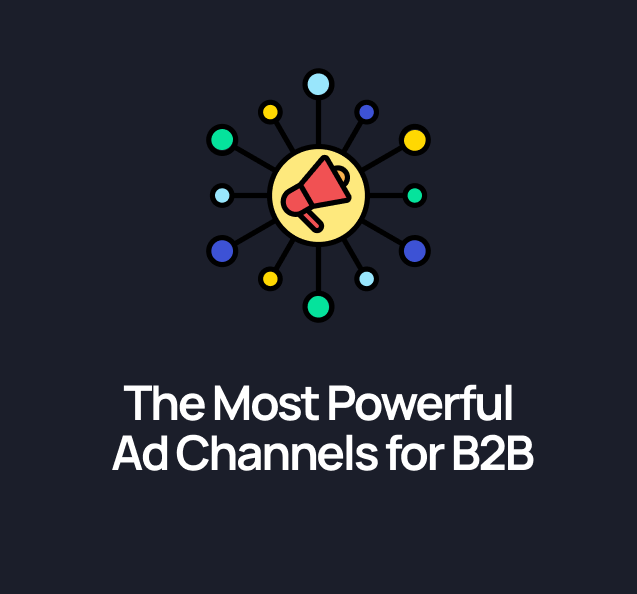Most B2B marketers have an ICP (ideal customer profile). Few know how to score it properly.
And that’s where paid campaigns start leaking budget.
ICP scoring isn’t about creating another slide in your sales deck. It’s about assigning weight to the characteristics that make a prospect worth your marketing spend. Done right, it transforms how you prioritise audiences, allocate budget, and measure campaign success.
Here’s how to use ICP scoring to run sharper, more efficient paid campaigns.
What Is ICP Scoring?
Your ICP is the profile of your best-fit customer. ICP scoring takes it a step further by giving each attribute a measurable value.
Think of it like lead scoring, but applied before leads even enter your funnel.
For example:
- Company size = 10 points if 200–500 employees, 5 points if 50–199
- Industry = 15 points if SaaS, 10 if FinTech, 0 if agencies
- Tech stack = 10 points if Salesforce, 5 if HubSpot
A company with 35 points is a stronger ICP match than one with 15. The difference is you now have a framework to segment and target with intent.
Why ICP Scoring Matters for Paid Campaigns
- Budget stops going to “maybes”
Instead of blasting ads to every job title in your TAM, you can focus spend where ICP scores are highest. - Creative gets sharper
Ad messaging can be customised for “high-scoring” cohorts, think ABM-style ads at scale. - Measurement improves
Rather than reporting “leads generated,” you can track qualified pipeline contribution against ICP fit. That shifts the conversation from volume to value.
Building an ICP Scoring Framework
Start with data you already have. Most teams jump to assumptions, but ICP scoring only works when it’s grounded in actual customers.
Step 1: Analyse your closed-won deals
Pull your last 50–100 deals. Look for patterns in:
- Industry
- Company size
- Geography
- Tech stack
- Deal size
- Sales cycle length
Step 2: Rank by impact
Not all attributes matter equally. For example, industry might be more predictive of conversion than geography. Assign higher points to the factors that correlate most with revenue.
Step 3: Validate with sales
Sales teams often spot nuances data misses, like certain job titles that block deals, or sub-industries that consistently churn.
Applying ICP Scoring to Paid Media
Here’s where the rubber meets the road:
1. Audience Targeting
- LinkedIn Ads → Build matched audiences by high-scoring firmographics (industry + company size).
- Google Ads → Layer ICP insights into custom segments (e.g. searchers at large employer firms 500+ employees, search history includes 'salesforce').
- Programmatic → Use intent data providers that let you filter by ICP attributes.
2. Budget Allocation
Prioritise ad spend based on ICP score tiers. Example:
- Tier 1 (30–40 points): 60% of budget
- Tier 2 (20–29 points): 30%
- Tier 3 (10–19 points): 10% (mainly for testing)
3. Messaging
Match creative to score tier. Tier 1 gets problem-aware, solution-specific messaging. Lower tiers get more educational ads.
4. Reporting
Don’t just report “leads.” Report leads by ICP score. This gives marketing a direct link to revenue potential, not just MQL volume.
Getting Started
ICP scoring isn’t complex, but it does require discipline.
- Use your CRM and deal data as your foundation.
- Build a simple 5–6 attribute scoring system.
- Apply it to paid campaigns first in targeting, then in reporting.
Do this, and you stop treating every lead the same. Instead, you’ll know which clicks are worth £150 and which aren’t worth £15.
Final Word
In 2025, B2B paid campaigns can’t afford to chase volume. The market is too competitive, and budgets are too scrutinised.
ICP scoring gives you a way to connect spend directly to business impact. It moves paid media from “lead gen” to revenue generation.
Find out more how Lever Digital, a specialist B2B PPC Agency can help you improve your inbound game.

.svg)








.svg)
